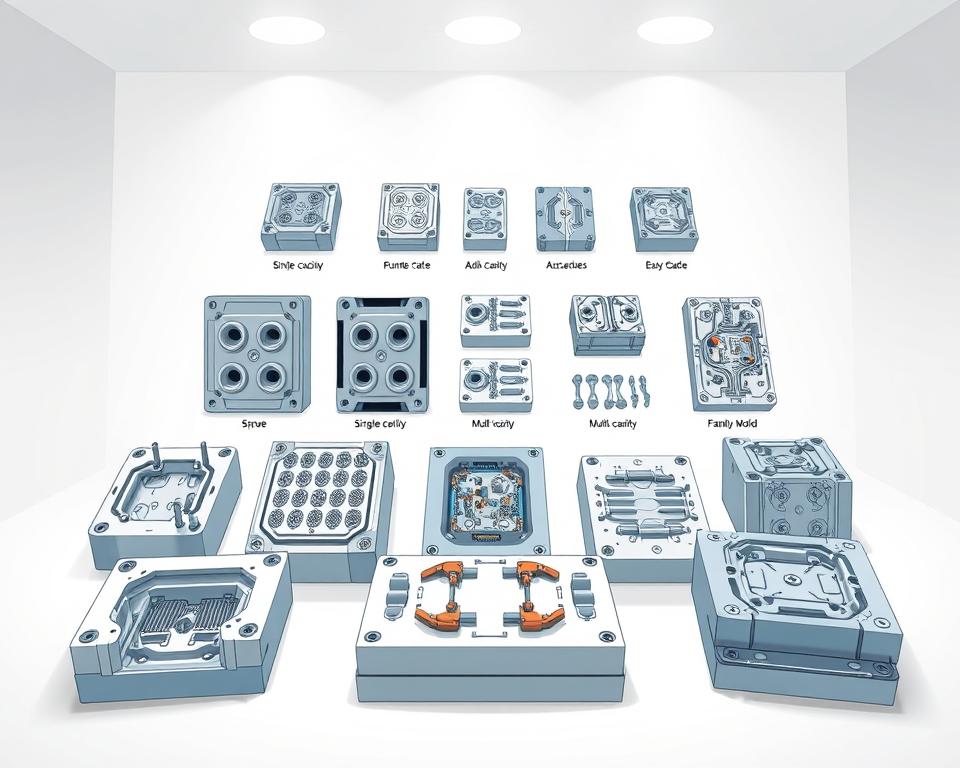China Injection Molding Procurement: Key Steps
Well, the major meeting has just concluded. your new product is a go, time is pressing, and the budget is, let’s say, constrained.. And suddenly someone—perhaps your superior or the finance head—says the fateful words that make any project manager’s heart skip a beat: “We should look at sourcing this from China.”
Naturally, you agree. It seems sensible at first glance. The potential savings can be massive. Yet your thoughts are already spinning. You’ve heard all the horror stories, right? The quality disasters, the communication black holes, the shipment that shows up three months late looking nothing like the sample. It feels like walking a thin line between big savings and total project failure.
But here’s the catch. Sourcing China injection molding can be a calculated project. It’s no different from any structured project. And like any project, it succeeds or fails based on the process you follow. It’s less about finding the absolute cheapest quote and more about finding the right partner and managing the process with your eyes wide open. Forget the horror stories. Let’s go through a step-by-step guide to succeed.

First Things First: Your Homework
Before searching suppliers or opening Alibaba, nail down your requirements. Truthfully, over fifty percent of offshore sourcing issues originate in an unclear project brief. You can’t expect a factory on the other side of the world to read your mind. It’s akin to asking someone to price-build “a structure” with no details. The replies will range from absurdly low to exorbitant, none of which help.
Your RFQ should be bulletproof—clear, detailed, and unambiguous. This package is your project’s foundation.
What should you include?
First, your 3D CAD files. They cannot be skipped. Use standard formats such as STEP or IGS to ensure compatibility. This is the authoritative CAD geometry.
But 3D isn’t enough. Add comprehensive 2D plans. Here you specify what 3D can’t show. I’m talking about critical tolerances (like ‘25.00±0.05 mm’), material specifications, required surface finishes, and notes on which features are absolutely critical to function. If a specific surface needs to be perfectly smooth for a seal, or a particular hole diameter is vital for an assembly, your 2D drawing needs to shout it from the rooftops.
After that, material choice. Don’t label it simply “Plastic.” Even “ABS” alone is too vague. Be explicit. If you need SABIC Cycolac MG38 in black, say exactly that. Why? Because plastic grades vary by the thousands. Defining the exact material guarantees the performance and appearance you designed with what is plastic mold.
They can offer alternatives, but you must provide the initial spec.
Lastly, add your business data. What’s your forecasted annual volume (EAU)? You must specify if it’s a 1K-part tool or a 1M-part production run. Tool style, cavity count, and unit cost are volume-driven.
Finding the Right Supplier
With your RFQ perfected, now, who do you send it to? The internet has made the world smaller, but it’s also made it a lot noisier. It’s easy to find a supplier; it’s hard to find a good one.
Begin on popular marketplaces such as Alibaba or Made-in-China. They let you survey dozens of suppliers quickly. But think of them as a starting point, not the finish line. Narrow your pool to about a dozen promising firms.
But don’t stop there. Think about engaging a sourcing agent. True, they charge a fee. Yet top agents deliver reliable, audited suppliers. They are your person on the ground, navigating the language and cultural barriers. On your first run, this is like insurance. It’s schedule protection.
Also consider trade fairs. If you have the travel budget, attending a major industry event like Chinaplas can be a game-changer. In-person meetings trump emails. Inspect prototypes, interview engineers, and sense their capabilities. And don’t forget the oldest trick in the book: referrals. Ask other project managers in your network. A recommendation from a trusted peer is often worth its weight in gold.
Shortlisting Serious Suppliers
With your RFQ dispatched to dozens of firms, estimates roll in. You’ll see ridiculously low offers and steep quotes. Now, sift through and shortlist 2–3 reliable candidates.
How to proceed? It blends technical checks with intuition.
First, look at their communication. Do they respond quickly and clearly? Can they handle detailed English exchanges? But here’s the real test: Are they asking you intelligent questions? A great supplier will review your RFQ and come back with thoughts. “Have you considered adding a draft angle here to improve ejection?” or “We see your tolerance requirement here; our CMM can verify that, but it will add to the inspection time. Is that acceptable?” Consider that a big green light. You know they know their stuff. A supplier who just says “No problem” to everything is a walking red flag.
Next, dig into their technical capabilities. Get their tooling inventory. Seek samples or case studies of comparable projects. A small-gear shop won’t cut it for a big housing.
Finally, inspect the factory. Skipping this is a mistake. You would never hire a critical employee without an interview, so why would you send tens of thousands of dollars for a tool to a company you’ve never truly vetted? You can either go yourself or, more practically, hire a third-party auditing firm in China to do it for you. They perform a one-day factory inspection. They will verify the company is real, check their quality certifications like ISO 9001, assess the condition of their machinery, and get a general feel for the operation. It’s the best few hundred dollars you will ever spend on your project.
From Digital File to Physical Part
Once you’ve chosen your supplier. you agree on 50% deposit to start toolmaking and 50% balance after sample sign-off. Now the process kicks off.
Initially, expect a DFM report. DFM means Design for Manufacturability. It’s their professional review of your CAD. They’ll flag thick sections prone to sink, sharp edges that stress, or insufficient draft. A thorough DFM is a sign of a professional operation. It’s a two-way partnership. You iterate with their team to optimize the mold.
Once the DFM is approved, they’ll start cutting steel to make your injection mold tool. In a few weeks, you’ll see “T1 samples are on the way.” These are the very first parts off the new tool. It’s your first real test.
Be prepared: T1 samples are almost never perfect. This is normal! Look for small flaws, slight size errors, or surface marks. You critique, they refine, and T2 plastic mold company parts arrive. You may repeat this cycle a few times. Plan for this loop in your schedule.
At last, you get the perfect shot. It meets every dimension, the finish is flawless, and it functions exactly as intended. This is your golden sample. You ratify it, and it becomes the quality yardstick for production.
Completing the Sourcing Journey
Landing the golden sample is huge, yet the project continues. Now you’re entering the mass production phase. How can you keep part #10,000 matching your golden sample?
Put a strong QC process in place. Typically, this means a pre-shipment audit. Use a third-party inspector again. For a few hundred dollars, they will go to the factory, randomly pull a statistically significant number of parts from your finished production run, and inspect them against your 2D drawing and the golden sample. They’ll send you a detailed report with photos and measurements. Only after you approve this report do you authorize the shipment and send the final payment. This step saves you from a container of rejects.
Finally, think about logistics. Understand the shipping terms, or Incoterms. Are you on FOB terms, where they load and you take over? Or EXW, shifting all transport to you? These details have a big impact on your final landed cost.
Overseas sourcing is a marathon. It hinges on strong supplier relations. Treat them like a partner, not just a line item on a spreadsheet. Clear communication, mutual respect, and a solid process are your keys to success. No question, it’s demanding. But with this roadmap, you can succeed, achieve savings, and maintain quality. You’re ready.

